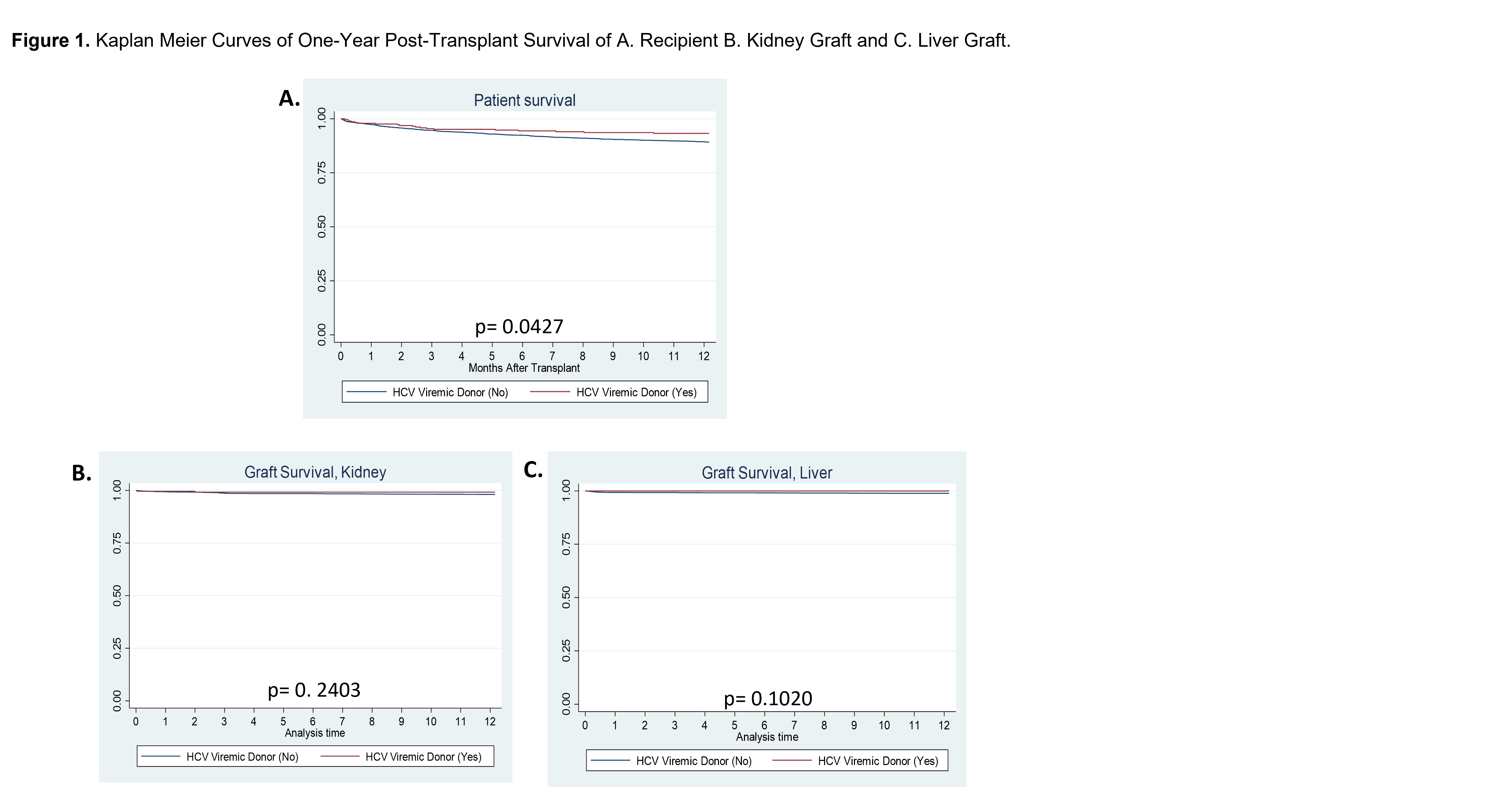Patient and Graft Survival for Simultaneous Kidney and Liver Transplant Recipients from Hepatitis C Viremic Donors: A Unos Database Analysis
Z. Haddadin, A. Parsikia, H. Kaul, N. Chandolias, R. Zaki, K. Khanmoradi
General Surgery, Einstein Medical Center-Philadelphia, Philadelphia, PA
Meeting: 2022 American Transplant Congress
Abstract number: 233
Keywords: Hepatitis C, Kidney/liver transplantation, Mortality, Organ Selection/Allocation
Topic: Clinical Science » Liver » 59 - Liver: Expanding the Donor Pool* (Liver: MELD Allocation / Donor Issues)
Session Information
Session Name: Expanding the Donor Pool (MELD Allocation/Donor Issues)
Session Type: Rapid Fire Oral Abstract
Date: Monday, June 6, 2022
Session Time: 3:30pm-5:00pm
 Presentation Time: 4:50pm-5:00pm
Presentation Time: 4:50pm-5:00pm
Location: Hynes Room 312
*Purpose: We aimed to compare recipient and graft survival for simultaneous kidney and liver transplant (SLK) recipients from hepatitis C virus (HCV) nucleic acid test (NAT) + donors and HCV NAT- donors.
*Methods: This was a retrospective cohort study utilizing UNOS data between 8/2015 and 12/2020. SLK recipients receiving both organs from the same donor were included. Multiorgan transplantations from different donors and HCV NAT+ recipients were excluded. The recipients were divided into two groups based on donor NAT status (NAT+ vs. NAT-). Demographic and clinical characteristics were compared between the two groups. Patient and graft survival were assessed using Kaplan-Meier survival analysis.
*Results: Overall, 4,089 SLK recipients were included; 288 NAT+ group and 3,801 NAT- group. Recipients in NAT+ group were significantly older, more likely to be Black, had higher creatinine, but had lower MELD at transplant (Table 1). Overall, they were less likely to have liver or kidney graft failure and mortality than recipients in NAT- group (Table 2). NAT+ donors were less likely to be Black, had lower BMI, and had a higher Kidney Donor Profile Index (KDPI) than NAT- donors. The most common cause of death in both groups were infections, cerebrovascular and cardiovascular causes. Graft failure accounted for 0.7% and 0% of deaths in recipients in NAT- and NAT+ groups, respectively. Recipients in NAT+ group had better one-year survival than recipients in NAT- group, with no difference in graft survival between the two groups (Figure 1).
*Conclusions: SLK recipients from NAT+ donors had better one-year survival compared to SLK recipients from NAT- donors. These data require further validation and study to elucidate the reasons of these findings and potentially expand the use of HCV NAT+ grafts.
To cite this abstract in AMA style:
Haddadin Z, Parsikia A, Kaul H, Chandolias N, Zaki R, Khanmoradi K. Patient and Graft Survival for Simultaneous Kidney and Liver Transplant Recipients from Hepatitis C Viremic Donors: A Unos Database Analysis [abstract]. Am J Transplant. 2022; 22 (suppl 3). https://atcmeetingabstracts.com/abstract/patient-and-graft-survival-for-simultaneous-kidney-and-liver-transplant-recipients-from-hepatitis-c-viremic-donors-a-unos-database-analysis/. Accessed December 17, 2025.« Back to 2022 American Transplant Congress

